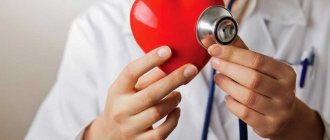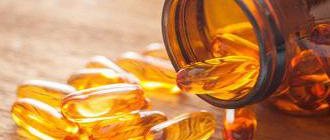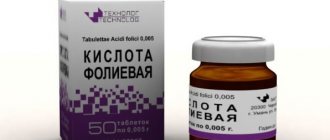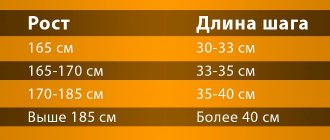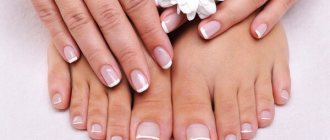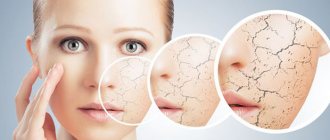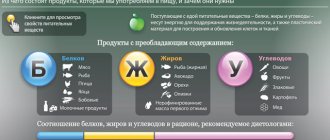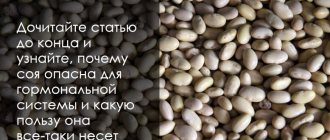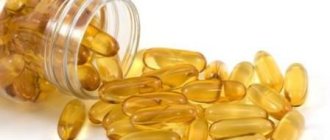The daily need for iodine is small and is calculated (mcg), so we classify iodine as a microelement. However, its significance is HUGE!
The main role of iodine in the human body is the formation of thyroid hormones, the objects of which are all cells.
Functions of thyroid hormones
- They regulate the processes of growth and development, activate transcription and differentiation of cells, regeneration of all tissues of the body, which is important during the formation and development of the fetal brain, the formation of intelligence, the development of the skeleton, and the reproductive system.
- They provide energy production, provide heat production, and increase basal metabolism by 30-50%.
- They regulate the work of more than 100 enzymes.
- Stimulates protein biosynthesis, producing an anabolic effect.
- Stimulate carbohydrate metabolism and fat breakdown, reduce blood cholesterol levels.
- Increases the formation of vitamin A in the liver from carotenoids.
- They enhance the effect of insulin, adrenaline, glucocorticoids, growth hormone, accelerating the growth of the child, stimulating the growth of tubular bones in length, affecting the metabolism of calcium and magnesium, increasing the mineralization of bone tissue.
- Strengthen adaptation processes under stress.
- Stimulate the function of the immune system, increasing antibacterial and antiviral immunity.
- Increases the activity of the central nervous system.
What is iodine
Iodine is the heaviest of the halogens and has increased volatility. Strong oxidizing agent. Toxic.
Absorption from food is 100%. Promotes the absorption of iodine - iron, calcium, copper, zinc, strontium, vitamin A and E.
Distribution: the human body contains 20-35 mg / 15-20 mg of iodine. Iodine actively accumulates (10-15 mg) in the thyroid gland - an “iodine pump” works, which extracts up to 40% / 17% of iodine from food. The thyroid gland should absorb 60 mcg of iodine per day. There are 400 mcg of iodine throughout the body.
Blood content . The level of iodine in the blood is constant, normally 10-15 mcg/l (250 mcg in total). During the day, 100-300 mcg of iodine enters the blood from the thyroid gland as part of hormones.
Selection . Iodine is eliminated from the body very quickly: the half-life is several hours. 90% of the iodine not captured by the thyroid gland is excreted in the urine.
Iodine interactions . Iodine antagonists are halogens: fluorine, chlorine, bromine, cobalt, manganese, lead - they reduce the iodine content in the body (fluorine - 8 times, bromine causes neurasthenia).
Biological role of iodine
As a trace element, iodine is present in all living organisms; in animals and humans, this element is part of the thyroid hormones produced by the thyroid gland (thyroxine T4 and triiodothyronine T3). Normally, the adult body contains approximately 12–20 mg of iodine (depending on body weight).
Please note: the daily requirement for iodine depends on the age, body weight and physiological state of the human body. In addition, it is important to consider the region of residence. It has been proven that iodine deficiency is diagnosed extremely rarely in people living on the coasts of seas and oceans. The thyroxine molecule contains 4 iodine atoms - this hormone is produced in the thyroid gland and is a kind of depot for its hormones. In peripheral tissues, thyroxine is converted to triiodothyronine (1 molecule of T3 contains 3 iodine atoms). It is triiodothyronine that affects almost all human organs and systems. This hormone, like T4, can also be produced in the thyroid gland, however, for normal production of both T3 and T4, the body must receive a sufficient amount of iodine through nutrition (from food). During the day, the human thyroid gland, with a sufficient amount of iodine supplied from outside, can produce about 90–110 mcg of T4 and only 5–10 mcg of T3. If there is insufficient iodine intake, the body is forced to compensate for the deficiency by rebuilding the hypothalamus-pituitary-thyroid system. As a result, the synthesis of thyrotropin-releasing hormone and thyroid-stimulating hormone (TSH) increases, and the thyroid gland begins to more actively produce thyroid hormones. Unfortunately, this process is accompanied by very negative consequences: excessive stimulation of TSH provokes the growth of thyroid cells - a person develops an endemic goiter.
Metabolism of iodine in the thyroid gland
Biosynthesis of hormones:
- Iodine is absorbed by theriocytes of the thyroid gland.
- Oxidizes to molecular iodine.
- Binds to the amino acid terosine in the lumen of the follicle with the participation of the enzyme peroxidase
- It accumulates as part of a protein colloid, the main component of which is thyroglobulin (this is the iodine reserve in the thyroid gland - 90%).
- Enter the blood as needed.
Thyroid hormones are found in the blood in a free state (active form) and can be bound to protein (inactive form).
Increased blood levels of T3 (triiodothyronine)
- In case of hypothyroidism, this is compensation for iodine deficiency.
- In hyperthyroidism, it causes thyrotoxicosis.
Regulation of the production of thyrotropin-resizing hormone (hypothalamus)
Activation - before bed, at low temperatures, norepinephrine, estrogens.
Inhibition - nonspecific stress, glucocorticoids, growth hormone.
How much iodine do you need?
Recommendations for iodine intake, mcg/day
| WHO, 2001, minimum | |
| Children 0-5 years old | 90 |
| The First 12 Months (1996) | 50 |
| Children 6-12 years old | 120 |
| Teens and adults | 150 |
| Elderly (1996) | 100 |
| Pregnant and nursing | 200 |
| NAS, USA, 2001 | |
| Children 0-6 months. | 110 |
| Children 7-12 months. | 130 |
| Children 1-8 years old | 90 |
| Children 9-13 years old | 120 |
| Teens and adults | 150 |
| Pregnant | 220 |
| Nursing | 290 |
| RF, 2008 | |
| Children 0-12 months | 60 |
| Children 1-3 years old | 70 |
| Children 3-7 years old | 100 |
| Boys 11-14 years old | 130 |
| Teenagers 14-18 years old | 150 |
| Adults | 150 |
| Pregnant (2nd half) | 220 |
| Nursing | 290 |
The pathological condition of the thyroid gland often requires a large amount of iodine consumed - 400-500 mcg.
Monitoring a person’s supply of iodine
| Index | RF | WHO 2004 target | |
| 1995-1999 | 2003-2005 | ||
| Level of iodine in urine, mcg/l | 79 | 88 | 100-200 |
| Proportion of families receiving iodized salt | 8-11% | 27,6% | More than 90% |
| Frequency of goiter in schoolchildren | 20-70% | 15-40% | Less than 5% |
Article 2 (Calculation of daily iodine intake)
A little about the purpose of iodine in the life of the body. Iodine is an integral part of thyroid hormones. Entering the body with food and water, iodine is actively captured by the thyroid gland from the blood and is used to form hormones that are involved in the development and regulation of: the psyche and nervous system, thyroid gland, cardiovascular system, gastrointestinal tract, reproductive function, skin and hair, musculoskeletal system. For the formation of a sufficient amount of hormones, a sufficient supply of iodine in the body is also necessary.
World medicine has recognized iodine deficiency as a major threat to human intelligence and development. It is a daily microdose of iodine that ensures a person’s ability to learn, determines the success of any activity and is the basis for the development of other abilities.
Each area has different iodine content in food and water. Almost throughout the entire territory of Russia there is an endemic iodine deficiency of varying severity. Iodine deficiency is most pronounced in mountainous and foothill regions (North Caucasus, Altai, Siberian Plateau, Far East). This is not the case all over the world. The average daily iodine consumption in different countries of the world is shown in table No. 1
Table 1. Average daily iodine intake in various countries.
| Country (literary source) | Average daily iodine intake, mcg/person/day | Range of average daily iodine intake, mcg/person/day |
| Australia (Eastman, 1993) | 200 | |
| Bulgaria (Gutekunst et al, 1992) | 20-60 | |
| Germany (Pfaff et al., 1995) | 76 | 55-100 |
| Denmark (Lamberg et al, 1993) | 300-350 | 300-687 |
| Spain (Muros et al, 1992) | 286,4-11344 | |
| Canada (Dussault, 1993) | 1000 | 60% - salt; 25% - dairy products |
| China (Hou et al, 1997) | 166 | 139-208 |
| Korea (Kim et al, 1998) (Moon et al, 1999) | 61-4086 1295-2744 (breastfeeding women) | |
| UK (Lazazus, 1993) (Nelson et al, 1985), (Lee et al, 1994) | 225 173 166 | Men in summer - 195, in winter - 306 Women in summer 126, in winter - 236 140-1000 |
| Poland (Gembick, 1993) | 125-250 | |
| Russia (MU 2.3.7.1064.01.2001) | 40-80 | |
| USA (Allegrini et al, 1983) (Pino et al, 1993) | 554 | 310-778 1 70-700 |
Based on the above data, it is clear that Russian residents need an additional source of iodine.
Iodine consumption standards. The daily iodine requirement depends on age and physiological state. The World Health Organization (WHO) recommends the following daily intakes of iodine:
Table 2. Physiological daily requirement for iodine (in micrograms)
| Groups of people | Iodine requirement in mcg/day |
| Children under one year old | 50 |
| Young children (2 to 6 years old) | 90 |
| Children from 7 to 12 years old | 120 |
| Young people (12 years and older) and adults | 150 |
| Pregnant women and during breastfeeding | 200 |
| Elderly people | 100 |
On average, iodine consumption in Russia is 40–80 mcg per day, with the recommended norm being 150 mcg per day, that is, 2–3 times lower than physiological needs. And if the recommended need for iodine during pregnancy is 200 mcg per day, then it turns out that pregnant women in Russia receive 2.5 - 5 times less iodine than needed. Thus, first of all, we need to take care of solving this problem for children, young people and, of course, pregnant women, that is, those on whom the intellectual and creative potential of the nation directly depends.
Everything is good in moderation! It must be remembered that iodine intake should be dosed. Excessive intake of iodine into the body, hundreds and thousands of times higher than recommended physiological norms, as well as iodine deficiency, can lead to the development of thyroid diseases. Over the course of a lifetime, a person consumes only 3-5 grams of iodine. This is about one teaspoon of this substance.
Ways to combat iodine deficiency. There are three options for iodine prophylaxis: mass, group and individual. The most effective is mass iodine prophylaxis, which consists of adding iodine salts to the most common foods (salt, bread, water). To implement this option, support at the legislative level is required. But over the past few decades, unfortunately, iodine prophylaxis programs have been practically curtailed. Therefore, Russol LLC wants to inform the population of Russia about how to solve the problem correctly and effectively.
As part of individual prevention, each person should choose an additional source of iodine for themselves. The most versatile is iodized salt.
Why salt? Because:
- almost everyone uses it;
- this is a cheap product that is available to everyone;
— salt is consumed in small quantities, so you can add more iodine to it than to other products;
— the cost of iodized table salt is practically no different from non-iodized salt.
Salt fortified with iodine is a safe food product.
Iodized salt is not a medicine that should be prescribed by a doctor. It does not contain pharmacological doses of iodine and is a common food product that is rich in iodine - such as seaweed.
Iodized salt is suitable for long-term storage, cooking and canning: iodine does not evaporate from it in large quantities, does not evaporate under the influence of temperature and does not change the taste or color of food. This is achieved thanks to a new standard for salt iodization - potassium iodate, a compound much more stable than iodide.
Iodine is necessary for a person throughout his life . As we have already found out, the daily intake of iodine for an adult is 150 mcg. The iodine content in iodized salt produced by Russol LLC is 40.0±15 mcg per gram of salt. With a maximum allowable salt intake of 10 grams, a person can receive up to 400 mcg of iodine per day. With a recommended salt intake of 5-6 grams - up to 200 mcg per day.
Thus, the use of iodized salt is an effective method of combating iodine deficiency. It is enough just to replace regular salt with iodized salt, and the Russian population will be able to prevent the development of thyroid diseases, maintain health and overcome the decline in intelligence.
Article 1 (On the problem of iodine deficiency in Russia)
Article 3 (Laboratory evidence)
Iodine content in food products
| Product | mcg of iodine per 100 g | % of TSA |
| Sea kale | 500-3000 | 300% |
| Cod liver | 370 | 247% |
| Squid, salmon | 200 | 133% |
| Shrimp, flounder | 190 | 73% |
| Cod | 135 | 90% |
| Sea bass | 60 | 40% |
| Vobla, pink salmon, chum salmon, flounder, salmon, tuna, | 50 | 33% |
| Mackerel | 45 | 30% |
| Herring | 40 | 27% |
| Chicken egg yolk | 33 | 22% |
| Chicken egg | 20 | 20% |
| Oats | 20 | 20% |
| Champignon | 18 | 12% |
| Pork | 16,7 | 11% |
| Broccoli | 15 | 10% |
| Beans | 12 | 8% |
| Beef | 11,5 | 8% |
| Hard cheeses | 11 | 7% |
| Durum wheat | 11 | 7% |
| Pistachios, peas | 10 | 7% |
| Milk, kefir, yogurt | 9 | 6% |
| Rye, barley | 9 | 6% |
| Barley, soybeans, grapes | 8 | 5% |
| Cabbage, carrots, beets | 6,5 | 4% |
| Radishes, lettuce, peas, green onions | 5 | 3% |
| Apples, fruits | 2 | 0,1% |
On average, a person receives 70-75 mcg of iodine per day from plant foods, 35-40 mcg from animal foods, and 5 mcg of iodine from water.
What is iodine deficiency?
The term “Iodine deficiency disease” was introduced by WHO in 1983, replacing the diagnosis of “goiter”.
Diseases associated with iodine deficiency
- Diffuse, non-toxic (euthyroid) goiter.
- Nodular euthyroid goiter.
- Functional autonomy of the thyroid gland.
- Iodine deficiency hypothyroidism - with severe iodine deficiency.
According to WHO, more than 2 billion people live in conditions of iodine deficiency, among whom 740 million have endemic goiter, 43 million suffer from mental retardation, and 6 million suffer from cretinism (a form of mental retardation).
In the Russian Federation, 100 million people live in regions with iodine deficiency, and iodine intake is 40-80 mcg/day.
Iodine deficiency severity criterion
| Criterion | Severity of iodine deficiency | |||
| norm | light | average | heavy | |
| Iodine content in urine, µg/l | > 100 | 50-99 | 20-50 | < 20 |
| TSH in blood, mU/l | < 3,0 | 3,0-20 | 20-40 | >40 |
| Thyroglobulin in the blood, ng/ml | < 10 | 10-20 | 20-40 | >40 |
Iodine deficiency diseases
Prenatal period of life:
- Miscarriages and stillbirths, risk of fetal death.
- Congenital malformations.
- Neurological cretinism: dementia, strabismus, deaf-muteness.
- Myxedema cretinism: hypothyroidism, dwarfism, dementia.
Newborns:
- Goiter of newborns.
- Congenital hypothyroidism.
Children and teenagers:
- Juvenile goiter (diffuse and/or nodular).
- Juvenile hypo- or hyperthyroidism.
- Impaired mental or physical development.
- Delayed puberty.
Adults:
- Goiter and its complications.
- Hypothyroidism.
- Decreased memory, intelligence, and creative potential.
- Menstrual irregularities, female infertility.
- The risk of having a child with cretinism.
- Risk of developing fibrocystic mastopathy.
- Decreased potency and infertility in men.
- Risk of thyrotoxic (autonomous) adenoma.
- Risk of nodular toxic goiter.
- The risk of developing thyroid cancer is only in the presence of nodular goiter.
- Acceleration of the development of atherosclerosis, risk of early aging.
All ages:
- Increased uptake of radioactive iodine.
- Decreased intelligence and creativity.
Products containing iodine
In conditions of decreasing microelement content in soil, water and air, the issue of preventing diseases and conditions associated with iodine deficiency is becoming extremely important today. Because it not only complicates everyday existence, but also threatens life itself. So that you never know what iodine deficiency is and what it entails, we advise you to eat more foods that contain it (after all, iodine enters the body only with food). Keeping in mind that thermal and technological processing of food - frying, the use of preservatives, dyes, stabilizers, etc. – significantly reduce the iodine content in the daily diet.
You might be surprised, but most of it is found in... ordinary water. Indicators may vary depending on the area and can be up to 15 micrograms per liter of drinking water. However, the richest source of iodine is ocean water. It is not for nothing that endocrinologists and nutritionists recommend including more seafood in the diet, since the inhabitants of the oceans manage to accumulate a sufficient amount of iodine in the body. Therefore, seafood has gained fame as the absolute leader in iodine content. One of the richest in this regard is the seaweed kelp or, otherwise, seaweed. The percentage of iodine in it is 0.3 of the total mass. If you consume 100-200 g of kelp every day, then iodine deficiency will not come close to you. On the contrary, you will feel healthy and energetic.
A real storehouse of iodine is sea fish: salmon and flounder, cod, halibut and sea bass, herring and tuna. Each of these species contains up to 70 mcg of iodine. The recognized leader here is cod liver, of which it is enough to eat 180 g per day so that the daily need for the microelement is more than met. In addition to fish, squid, crabs, mussels, shrimp, oysters and other seafood are good “suppliers” of iodine to the body. And, of course, fish oil: in this product the iodine content reaches - think about it! – 770 mcg.
However, not everyone has the opportunity to eat seafood every day, which, moreover, is not cheap. But no problem. You can buy sea salt or use its equivalent, iodized table salt. But remember: from a poorly packaged or already opened pack, half of the microelement reserves are lost within two months. Some everyday foods that contain sufficient amounts of iodine include onions and garlic, potatoes and cabbage, tomatoes and beets, radishes and spinach, asparagus and rhubarb. Iodine is present in beans and carrots, buckwheat and millet cereals, grapes and strawberries. It is found in small quantities in meat and milk, egg yolks. It is contained in apple seeds: just eat, chew thoroughly, five pieces and the daily requirement is covered.
What is hypothyroidism?
Hypothyroidism is a persistent (long-term) lack of thyroid hormones in the body.
Causes of hypothyroidism
Primary hypothyroidism is 99% damage or disorder of the thyroid gland.
- Disorder of intrauterine development of the thyroid gland - congenital.
- Injuries and reactions, treatment with iodine isotope, irradiation of the thyroid gland
- Autoimmune thyroiditis is an atrophic form.
- Viral infection of the thyroid gland.
- Endemic goiter due to iodine deficiency (less than 20-25 mcg/day) - 90-95%.
Clinical symptoms: increased volume of the neck, sensation of a lump in the throat, difficulty swallowing, hoarseness, frequent coughing, irregular heart rhythm.
Often diffuse or even nodular changes in the thyroid gland do not lead to an increase in its function.
Secondary hypothyroidism is a dysfunction of the pituitary gland.
- Decreased production of thyroid-stimulating hormone (TSH) in the pituitary gland or production of inactive TSH, as well as disruption of the TSH receptor in the thyroid gland.
Tertiary hypothyroidism is a disorder of the hypothalamus.
- Decreased or impaired production of thyroid hormone-releasing hormone (TRH) in the hypothalamus.
Consequences of hypothyroidism
- Constant feeling of chilliness (lack of energy).
- Increase in body weight with unchanged nutrition (decrease in basal metabolism).
- Headaches, often pain in muscles, joints, numbness of the hands.
- Swelling of the limbs, swelling of the face - the face resembles a frozen mask.
- Skin: dry, cold, pale yellow.
- The voice becomes rough, low, speech becomes slow, slurred, often snoring in sleep.
- Difficulty in nasal breathing and hearing loss.
- Hair loss and fragility, brittle nails.
- Half of the patients have a slow pulse.
- Pain when walking - intermittent claudication (oxygen deficiency).
- Slow digestion, frequent constipation, hypotension of the gallbladder.
- Decreased sexual desire and potency, cycle disorder.
- Slowness of movements, mental retardation, decreased memory, attention, drowsiness, depression.
- Tendency to frequent infections (decreased immunity).
What is thyrotoxicosis?
Thyrotoxicosis is an increase in the production of thyroid hormones T3 and T4.
Causes of hyperthyroidism
- Diffuse or nodular toxic goiter (Graves' disease, Graves' disease) is an autoimmune disease (80%).
- Hashimoto's autoimmune thyroiditis is a hypertrophic form.
- Functional autonomy of the thyroid gland - nodular toxic goiter, thyroid adenoma.
- Pituitary tumor - increased TSH production.
- Congenital thyrotoxicosis is a mutant TSH receptor.
- Trophoblastic thyrotoxicosis is the production of TSH by the trophoblast during pregnancy.
- Production of thyroid hormones outside the thyroid gland - metastases, ovarian struma.
- Destruction of the thyroid gland - with an increase in the release of thyroid hormones into the blood.
- Excess of thyroid hormones introduced from outside - L-thyroxine.
- Excessive intake of iodine into the body.
Graves' disease is never observed in people living in iodine-supplied regions.
A normal thyroid gland copes with a moderate excess of iodine using autoregulation mechanisms, but when the thyroid gland becomes enlarged, these mechanisms stop working.
The mechanism of development of thyrotoxicosis with iodine deficiency
Iodine deficiency in diet:
- The production of TSH increases, which stimulates the thyroid gland.
- Activates proliferation stimulators (cell division) and growth factors: interleukins, insulin-like growth factor 1 (IGF-1), epidermal growth factor (EGF), inositol triphosphate (a powerful proliferation factor).
- The more the iodine content in food decreases, the more the activity of growth factors increases, which leads to an increase in the number of cells and size of the thyroid gland. Goiter formation occurs as a result of activation of growth factors in the thyroid gland.
- With prolonged iodine deficiency, the regulatory mechanisms that support the functioning of the thyroid gland are depleted, which leads to the formation of nodules and the formation of nodular toxic goiter.
- Long-term iodine deficiency in food increases the risk of mutations that are aimed at the formation of cells with higher activity - they increase the formation of thyroid hormones - T3 and T4, which leads to the formation of diffuse or nodular goiter with increased functional activity of the thyroid gland and uncontrolled increased production of thyroid hormones .
With a normal concentration of iodine in the diet, TSH does not stimulate enlargement of the thyroid gland.
Excess iodine in diet:
- Blocks the synthesis of thyroid hormones and stimulates the formation of thyroid cell growth blockers and, possibly, other growth factors - reducing the risk of developing cancer.
Diseases from iodine deficiency
Hypothyroidism. It occurs due to a clear lack of this microelement in the body. It can be congenital or acquired. With illness, the ability of the thyroid gland to compensate for the effects of unfavorable factors is weakened, and a persistent deficiency of thyroid hormones develops. The disease is especially dangerous for people living in regions where lack of iodine in food is an objective phenomenon. Often in such areas women suffer, in whom hypothyroidism leads to reproductive disorders and the inability to have children.
Patients are usually lethargic and slow, their performance is clearly reduced, their voice becomes rougher, they complain of drowsiness and memory loss. Puffiness of the face, swelling of the lower extremities, dry skin, and bluish color of the lips often occur. Hair begins to fall out, nails become brittle, and there is also respiratory failure, a low pulse, and surges in blood pressure (there is a risk of heart attack). Patients are constantly chilly, they may suffer from excess weight, paresthesia and suffer from constipation. Hypothyroidism most often affects older people who, in particular, have been diagnosed with type I diabetes mellitus, multiple sclerosis, rheumatic diseases, high cholesterol, and Addison's disease.
Endemic cretinism. It manifests itself as a pronounced disturbance in the functional activity of the thyroid gland, which is fraught with a decrease in the level of thyroid hormones. This decrease is most dangerous when a woman is carrying a fetus, when its brain is forming. If iodine deficiency is not detected in time and not corrected, the baby will be born with endemic cretinism. This disease manifests itself as disturbances in the mental and intellectual development of the child. At the same time, he may have a characteristic puffy face, deaf-muteness, oculomotor disorders and pathology of the thyroid gland itself. However, and this is encouraging, psychomotor impairments are not clearly expressed in all cases.
Autoimmune thyroiditis. Most often it manifests itself in regions with poor ecology. A characteristic sign of the disease is a diffusely enlarged thyroid gland. Women are affected more often than men. Often the disease does not manifest itself with any symptoms and can be discovered accidentally during examination of the thyroid gland. Symptoms may appear if the destruction of gland cells is accompanied by a decrease in its function - hypothyroidism (see above). However, at the start of the disease, the thyroid gland produces even more hormones than normal. This phenomenon is called thyrotoxicosis. It is characterized by emotional instability (mood swings, severe irritability, tearfulness), loss of body weight, interruptions in heart function, increased blood pressure, intestinal problems (diarrhea), autonomic reactions (feeling hot, sweating), decreased libido, menstrual irregularities , hair loss. Thyrotoxicosis persists for some time, and then can develop into hypothyroidism.
Cardiac iodine deficiency. The complex of symptoms for this condition is very serious. These are arrhythmia, vascular atherosclerosis, increased “lower” (diastolic) pressure due to swelling of the vessel walls. Diet therapy and treatment with special antiarrhythmic drugs do not produce tangible results.
In addition to the named pathologies - they are considered the main ones - iodine deficiency in the body has other manifestations. Namely osteochondrosis (muscle pain, weakness, pain in various parts of the spine); renal (swelling occurs around the eyes, which in the next stages manifests itself on the face and limbs); anemic (the level of hemoglobin in the blood decreases, which in turn provokes the occurrence of other diseases). Gynecological manifestations are common (irregularity of menstruation, mastopathy, difficulties with conception, infertility, and if pregnancy does occur, it is difficult, with symptoms of intrauterine hypoxia); immune (the body’s defenses weaken, colds and infectious diseases occur more often); respiratory (swelling of the bronchi and lungs occurs, developing into acute respiratory infections or chronic bronchitis). Typically, traditional therapy - for example, iron supplements for anemia or hormonal therapy for menstrual cycle disorders - is ineffective for these conditions. The problem in such cases can be solved in only one way - to replenish the iodine deficiency in the body.
Signs and consequences of hyperthyroidism
- An enlarged thyroid gland is a goiter (10% do not have an enlarged thyroid gland).
- Constant feeling of heat, thirst, severe sweating (increased body temperature).
- The patient loses weight while maintaining nutrition and good appetite.
- The skin is warm and moist.
- Hair is thin, brittle, turns gray early, and falls out easily.
- Increased brittleness of nails.
- The face is pale, but quickly turns red, there is an expression of fear on the face, and when the gaze is fixed, there is an “angry look.”
- Protruding eyes, shiny eyes, rare blinking, swelling of the tissues around the eyes - “bulging eyes”, feeling of sand in the eyes, photophobia, lacrimation, swelling of the eyelids.
- Irritability, conflict, quarrelsomeness, aggressiveness, fussiness, tearfulness, rapid mood swings, unreasonable fears.
- Absent-mindedness, decreased concentration, weakness, insomnia, dizziness, and headache are common.
- Fine trembling of the fingers of outstretched arms, handwriting becomes uneven and illegible.
- Unstable chair. Impaired liver function with the development of jaundice (increased bilirubin).
- Heart damage - heart flutter and interruptions in work - arrhythmias (in 15-40%), cause heart failure.
- Increased blood pressure, increased blood viscosity, risk of thrombosis.
- Muscle weakness increases.
- Decreased potency and enlarged mammary glands in men.
How is iodine useful and why does the body need it?
The benefits of iodine for the body are obvious. The microelement participates in the activity of the endocrine and nervous systems and controls thermoregulation processes. The substance regulates and levels out the general hormonal background of the body and coordinates the synthesis of hormones, preventing the occurrence of sudden changes. Therefore, in women, iodine deficiency provokes emotional outbursts, and in men, dysfunction of the genitourinary system.
Iodine helps maintain normal body weight and break down fats, i.e. coordination of energy exchange. It strengthens hair and nails, ensures a healthy state of the musculoskeletal system and muscle tissue.
The microelement directs metabolism at the micro- and macrolevel, and is also responsible for the formation of special cells of the immune system, phagocytes, whose function is the destruction of foreign pathogenic microflora. Thus, the strength of the immune system directly depends on the sufficient supply of iodine to the body.
What is iodine intoxication?
Iodine poisoning - iodism. Occurs when consuming medications containing iodine or coming into contact with iodine. Poisoning can also be induced by excess dietary iodine intake.
A daily dose of iodine is considered safe - 500 mcg.
Excess iodine can, on the one hand, increase the production of thyroid hormones, and on the other, inhibit the function of the thyroid gland. Why this happens is unknown.
Many people regularly take huge doses of iodine - from 10 to 200 mg per day without any side effects (the antiarrhythmic drug Cardarone contains 75 mg of iodine). But do not abuse excessively high doses of iodine!
Signs of iodine intoxication
- Cough, runny nose, watery eyes, drooling (swelling of the salivary glands).
- Hoarseness of voice, pain and burning in the throat, thirst.
- Headache, dizziness, lethargy.
- Iododerma - skin lesions (on the face, neck, limbs), itchy acne, urticaria, rubella, erysipelas often appear, and upon contact with crystalline iodine - burns and ulcers.
- Eye damage: blepharitis and conjunctivitis, eyelash loss, decreased visual acuity, cataracts.
- Metallic taste in the mouth.
- Bad breath when breathing.
- Periodic nausea, vomiting.
- Pain in the right hypochondrium, yellowness of the skin (liver damage).
- Respiratory tract: frequent colds, sore throats, pneumonia and other infections.
Is there excess iodine in the body?
When consuming iodine in a dose exceeding 2000 mcg (for an adult), symptoms of excess of this trace element may appear. Symptoms of excess iodine in the body include:
- Insomnia;
- cardiopalmus;
- metallic taste in the mouth;
- Increased body temperature – low-grade fever;
- Weakness.
Please note: cases of excess iodine in the body are recorded extremely rarely, because about 90% of the iodine entering the body is quickly excreted in the urine through the kidneys. Dr. Komarovsky will tell you how to take iodine correctly in a video review:
Evtushenko Oleg, endocrinologist Fadeev V. A., Melnichenko G. A. Hypothyroidism: Director. for doctors. M.: RKI Sovero press, 2004. P. 288. [ii] Kasatkina E. P., Shilin D. E., Petrova L. M. et al. The role of iodine supply in neonatal adaptation of the thyroid system // Problems of endocrinology 2001. T. 47, no. 3. pp. 10–15. [iii] Ageikin V. A., Artamonov R. G. Thyroid dysfunction in newborns and infants born to mothers with thyroid diseases // Ros. pediatrician. magazine 2000. No. 5. P.60–63. [iv] Dedov I. I., Sviridenko I. Yu. Strategy for the elimination of iodine deficiency diseases in the Russian Federation // Problems of endocrinology 2001. T. 47, No. 6. P. 3–12. [v] Editorial: achieving optimal iodine nutrition in pregnant and lactating women and young children: programmatic recommendations /Eds. J. Untoro, N. Managasaryan, B. de Benoist, I. DantonHill //Public Health Nutrition. 2007. V. 10, N 12A. P. 1527–1529.
39, total, today
( 203 votes, average: 4.57 out of 5)
How to lower blood sugar - traditional methods and diet
Antiulcer drug "Dalargin": instructions for use, analogues, composition
Related Posts
Use of iodine in nutrition
Where can you find iodine
When producing iodized salt, 4 mg of potassium iodate (KJO3) is added per kilogram - stable (stays for 9-12 months), potassium iodide KJ - unstable (stays for 3 months).
1 g of salt contains 40 mcg of iodine. It is believed that the average person consumes about 1 teaspoon of salt. If about half of the iodine is lost during cooking, we will receive approximately 150 mcg of iodine.
In iodine-poor regions, it is necessary to use iodized salt 7.5 mg/kg of salt, with a daily intake of 5 g of salt.
One stool tincture of iodine contains 5000 mcg of iodine - 25 times more than what a person needs per day. You can dilute 1 drop of iodine in a glass of water (200 ml), take 5 ml - 1 teaspoon (125 mcg of iodine).
Recommended daily dose of iodine
Since the thyroid gland is responsible for the formation of brain cells, teeth, hair, and dermis, the dosage of iodine that feeds it is maximum for pregnant women and women during lactation (200–220 mcg per day). For other categories of adults, about 150 mcg of this microelement is enough. Children under 2 years old need to provide at least 50 mcg of iodine, from 2 to 6 years old - twice as much. Schoolchildren need to consume 120 mcg per day.
How much iodine is in NSP products?
| NSP products | TSA, % | multiplicity | in total | |
| Iodine (150 - 300 mcg) | ||||
| Kelp | 200/500 | 133% | 1 x 1 | 200/500 |
| Super Complex | 75 | 50% | 1 x 1 | 75 |
| Smart Mil (34 mg) | 52,5 | 35% | 1 x 1 | 52,5 |
| TNT (19 g) | 22 | 15% | 1 x 1 | 22 |
| hsn | 9,3 | 18% | 1 x 1 | 9,3 |
| Vitasaurians | 1,4 | 6% | 1 x 1 | 1,4 |
Regularly eat seafood that is rich in iodine! Breathe sea air that contains iodine!
Iodine consumption should be regular - daily and multiple times (several times a day), if your thyroid function is not increased!
Recommendations of Ph.D. nutritionist Yury Aleksandrovich Lysikov
The full recording of the material on the topic “The importance of iodine in nutrition and NSP products” can be listened to below:

